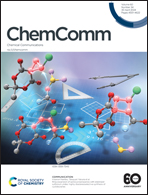Recent advances in the approaches for improving the photovoltaic performance of porphyrin-based DSSCs
Abstract
Among other photovoltaic techniques including perovskite solar cells and organic solar cells, dye-sensitized solar cells (DSSCs) are considered to be a potential alternative to conventional silicon solar cells. Porphyrins are promising dyes with the properties of easy modification and superior light-harvesting capability. However, porphyrin dyes still suffer from a number of unfavorable aspects, which need to be addressed in order to improve the photovoltaic performance. This feature article briefly summarizes the recent progress in improving the Voc and Jsc of porphyrin-based DSSCs in terms of molecular engineering by modifying the porphyrin macrocycle, donor and acceptor moieties of the porphyrin dyes, coadsorption of the porphrin dyes with bulky coadsorbents like chenodeoxycholic acid (CDCA), and cosensitization of the porphyrin dyes with metal-free organic dyes. Notably, concerted companion (CC) dyes are described in detail, which have been constructed by linking a porphyrin dye subunit and a metal-free organic dye subunit with flexible alkoxy chains to achieve panchromatic absorption and concerted enhancement of Voc and Jsc. In one sentence, this article is expected to provide further insights into the development of high performance DSSCs through the design and syntheses of efficient porphyrin dyes and CC dyes in combination with device optimization to achieve simultaneously elevated Voc and Jsc, which may inspire and promote further progress in the commercialization of the DSSCs.



 Please wait while we load your content...
Please wait while we load your content...